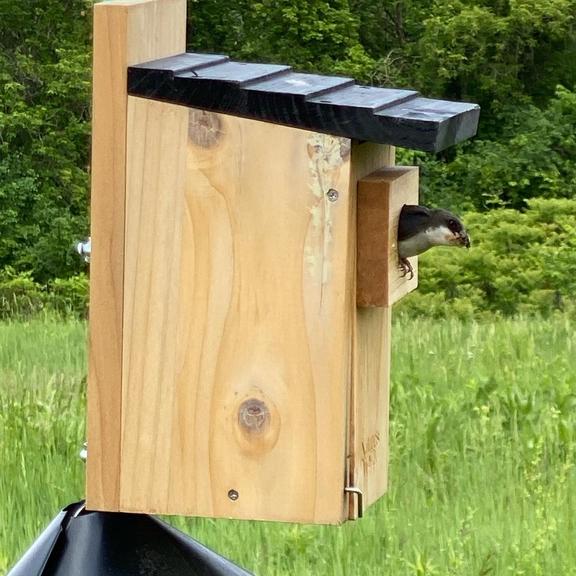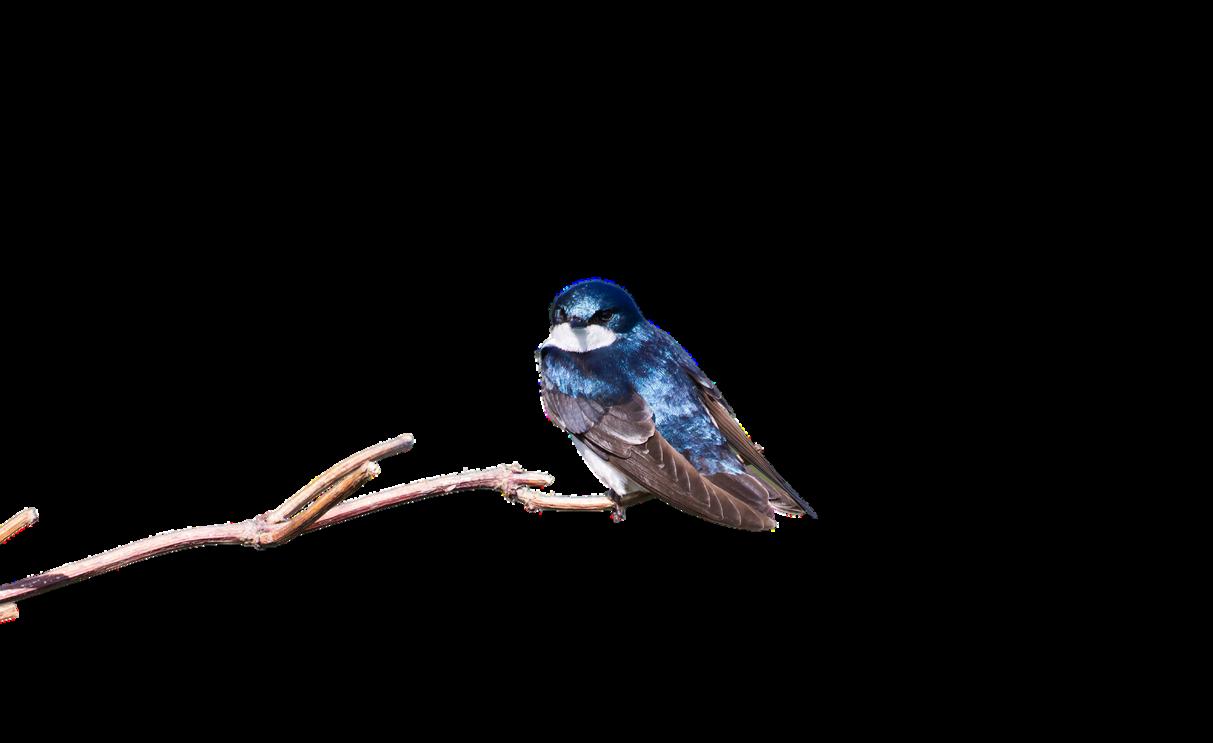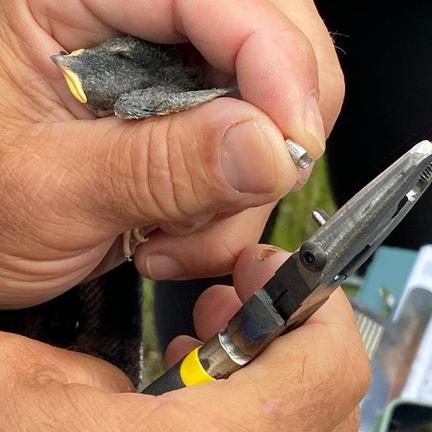
1 minute read
Project Update
by kepo-mck
Nest Box Trail

by Julie Delisle, Environmental Education Liaison
In early 2022, KEPO applied for and was awarded funding from Bird Protection Quebec to support upcoming bird conservation projects including a nest box trail. On April 27, the KEPO team installed the ten nest boxes at the former Kahnawà:ke Survival School campus. The nest box trail project was intended to support populations of eastern bluebirds. By May 20, almost all the nest boxes were taken over by tree swallows.
Like the eastern bluebird, tree swallows are a native species and cavity nesters. Cavity nesters are birds that build nests, lay eggs, and raise their young in holes in dead trees or poles, rock crevices, or similar artificial cavities They are a deep-blue iridescent color with white fronts Tree swallows mainly eat insects and, as aerial foragers, they will capture most of their prey while in flight
Between 1966 and 2014, tree swallows saw a steep population decline in eastern Canada, as part of an overall decline in aerial insectivores This decline is likely the result of insect prey loss and habitat loss Currently, they are listed as least concern in Quebec for conservation.

As of June 23, there were eight complete nests with 24 chicks and nine eggs. KEPO has been happy to share the progress of the tree swallows in social media updates to the community and will continue to monitor the nests until all the chicks have fledged.
Bird Banding
With the help of certified banders, 14 tree swallow chicks and four adults have been banded and returned to their nests or released. Each bird received a specific numbered band and if caught again in the future, it will provide researchers with important information about the bird’s life, including life span and travels. Data collected helps us understand bird species better and ultimately, how best to conserve their populations.









